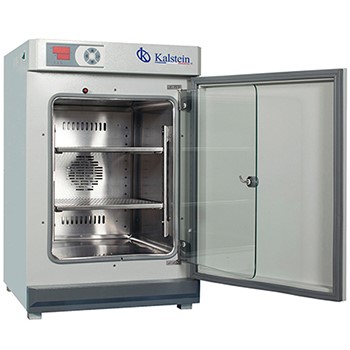The laboratory incubator is a piece of equipment used to maintain microbiological and cell cultures. How is this achieved? The incubator has the ability to maintain optimal temperature and humidity, as well as the levels of carbon dioxide and oxygen that may be present in the incubator.
They are usually equipment of great need, since it facilitates the execution of a number of experimental works, these studies can focus on molecular biology, microbiology and cell biology, among others.
These incubators can usually be found in microbiology laboratories and can be used extensively in the medical area, they can store plates and tubes without any inconvenience.
What is the laboratory incubator for?
The laboratory incubator is used to store and condition an environment where microorganisms develop adequately, through temperature, pressure and, of course, air circulation.
How does the Laboratory Incubator work?
The laboratory incubator is electrical equipment, which has a completely simple operation, it has a box that is exposed to constantly changing temperatures, it contains a heating system and a thermostat that can be adjusted according to your needs.
The laboratory incubator generally works between temperatures of 60 ° and 65 ° C or between 140 ° and 170 ° F. For the culture of bacteria, the temperature that is used conventionally is 37 ° C, this is because These organisms have the ability to develop naturally under these conditions.
A large number of laboratory incubators have a timer and can be programmed to cycle through different temperatures, humidity, among other aspects. Incubators have great benefits, since you will find them in different sizes, so they can be adapted to any space or place.
Using the Laboratory Incubator
Taking into account the type of microorganism in question, the conditions of temperature, air circulation and pressure are applied, in order to store everything that contains chemical samples, and then proceed to carry out analyzes of medical relevance. Laboratory incubators are used to carry out extensive research and the development of medical analysis related to biology and cells.
Even when the use of the laboratory incubator is summarized to studies of cells and molecules, the impact that this process has on society and medicine is quite important, hence the relevance of this great equipment.
Types of laboratory incubators
Taking into consideration the use you want to give the laboratory incubator, you can find a variety of them, below, I show you some:
- Standard incubator: They are characterized by assisted convection, perhaps by gravity or fan. They have a temperature range of 80 ° to 100 ° C maximum.
- Refrigerated incubators: Operate at a temperature close to or lower than room temperature.
- Humidity incubator: This incubator has the ability to control both temperature and humidity, this is achieved through a refrigeration system instead of direct heating.
- Shaking incubators: They have the ability to shake at a controlled temperature, these can be found in different sizes and with specific ranges of ambient and refrigerated.
Laboratory Incubator Features
In principle, you should know that the laboratory incubator has an appearance similar to that of an executive-type refrigerator. You can see that among its parts it has a panel where the temperature and internal data of the incubator are indicated.
Inside it you can find a stainless steel enclosure, made of this material to avoid wear and tear in the area, due to the type of work that is carried out.
In some of its presentations you will see a glass door that protects the shelves from any external substance or contaminant that may enter the incubator.
Without a doubt, knowing what the parts of a laboratory incubator are and what they are for can be of great help when handling this great equipment. You will have a better handling of it and of course better results in the studies you want to carry out.
At Kalstein we offer you an excellent range of incubators. That is why we invite you to take a look at our equipment available HERE

